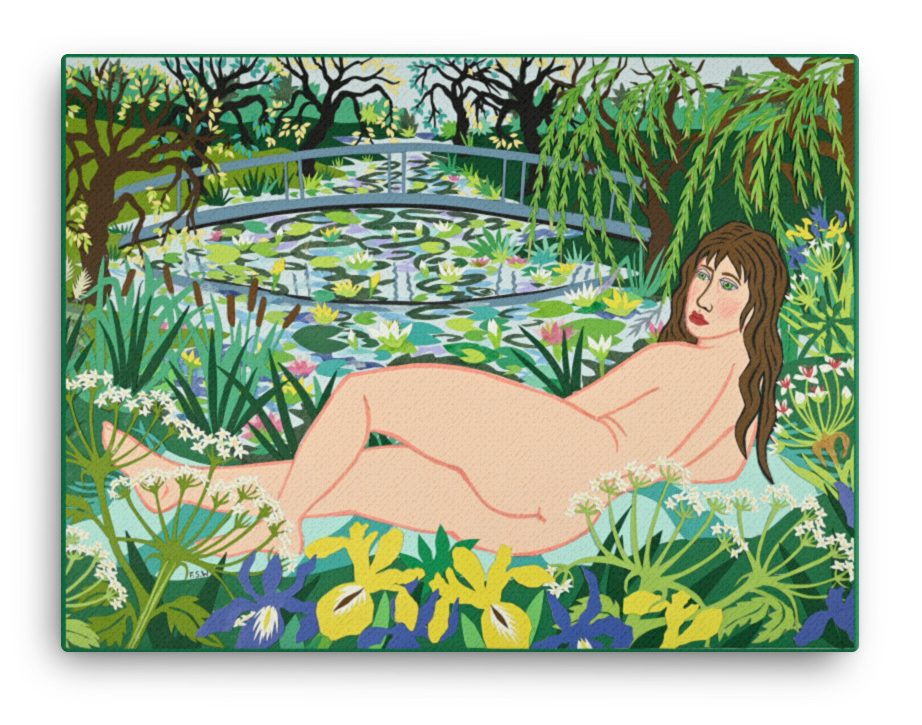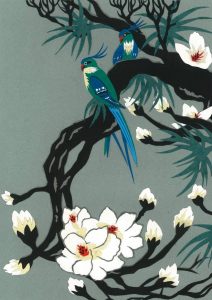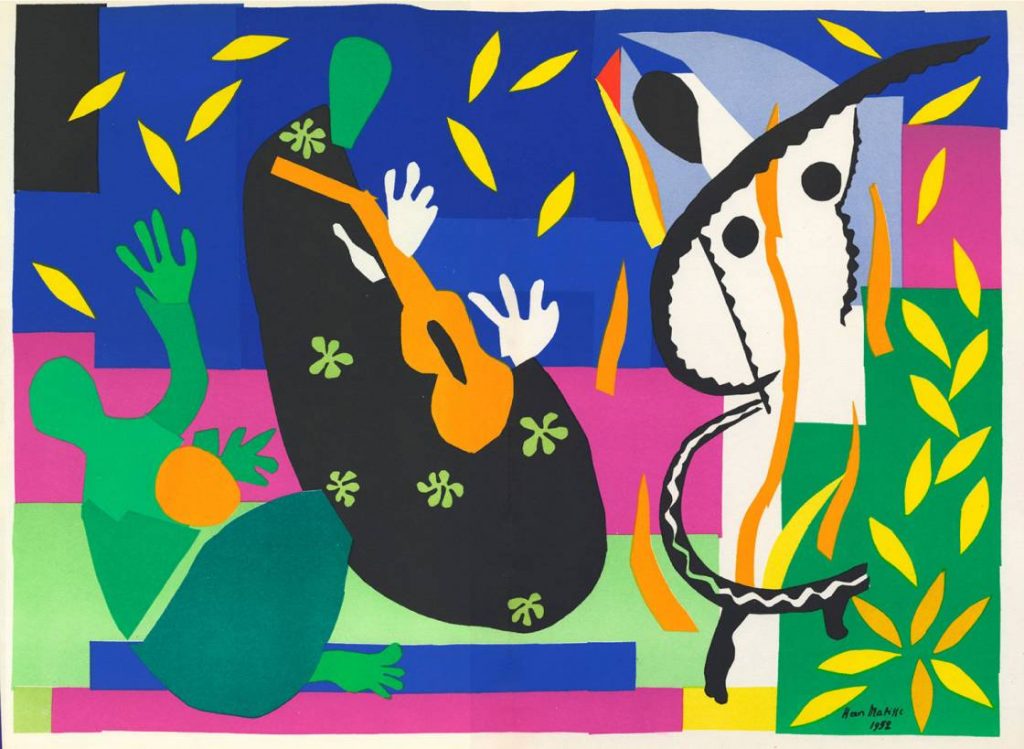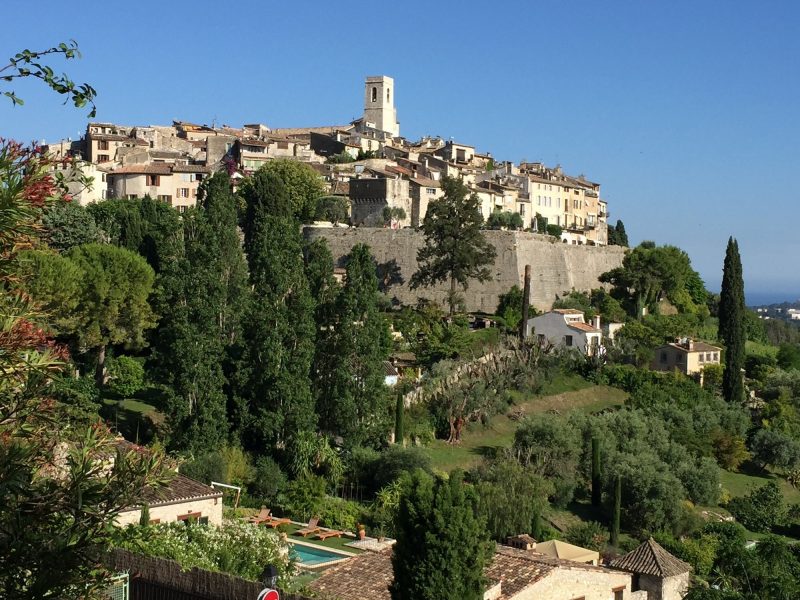
A dream come true in St Paul De Vence
On a journey through Europe to my mountain retreat In Liguria, Italy we stopped to enjoy a few days in the magical French village of St Paul de Vence, known to many travellers and people who enjoy art as a haven for artists, writers and bohemians of the past such as Marc Chagall, Picasso, Matisse, John Paul Sartre and now emerging artists who exhibit in galleries found in the myriad of winding, narrow, cobbled streets around the hilltop village.
St Paul de Vence retains its innate, quaint charm and its love of artists as they are revered in many restaurants celebrating the lives of famous painters and their works. We visited a gallery dedicated to Marc Chagall’s work, with his whimsical, dreamlike artwork on display in the window. I thought it was a printed copy but it turned out to be a real limited edition print with a very impressive price tag! Accessible art for a price, a collector’s dream.
During our wonderings my partner Nicholas got chatting to a delightful, seasoned, established artist who had lived and worked in the village for many years. He was sitting hidden behind an array of paintings in his little gallery. His various works from mountain views to funny cartoon images with words of wisdom were clearly popular with many visitors. As they bonded over art, life and the state of the world, my partner mentioned that I was a cut-paper artist and greatly influenced by Matisse who made cutting into paper a viable art form when his eyesight started to deteriorate and could no longer paint. I have evolved Matisse’s process to create my own cut-paper works which have now developed into paintings in paper.
When I met with Jeanlouis in his extraordinary Gallery, I was immediately struck with an instant feeling of rapport, a connection by that invisible thread that artists share, a sixth sense, when they recognise another creative with a voice. A maturely handsome, man of charm and humour with a twinkle in his eye. We talked easily about his gallery and work and how things were in St Paul de Vence after the dreaded Covid shut down and how it had impacted on village life.
It felt like a moment of serendipity, to connect with such a wonderful artist simply by chance and to see if we could collaborate in a partnership to help each other thrive in a challenging market. It was a lifetime dream having visited St Paul de Vence many years ago, finally to show some of my cut-paper work in his gallery in an historic and prestigious art village, in the footsteps of such well known artists.
I was delighted and thrilled when he responded with such positive enthusiasm when he saw examples of my Cut Paper painting prints that I had brought to show another Gallery curator who had expressed interest in a previous visit. Jeanlouis was very happy to forge a creative partnership with me that we hope will benefit both of us. What joy! A validation from another artist is so vital and important.
For me it is so much more than showing my artworks in a mountain village in France. It means there is atill a piece of my heart and now artworks in Europe.
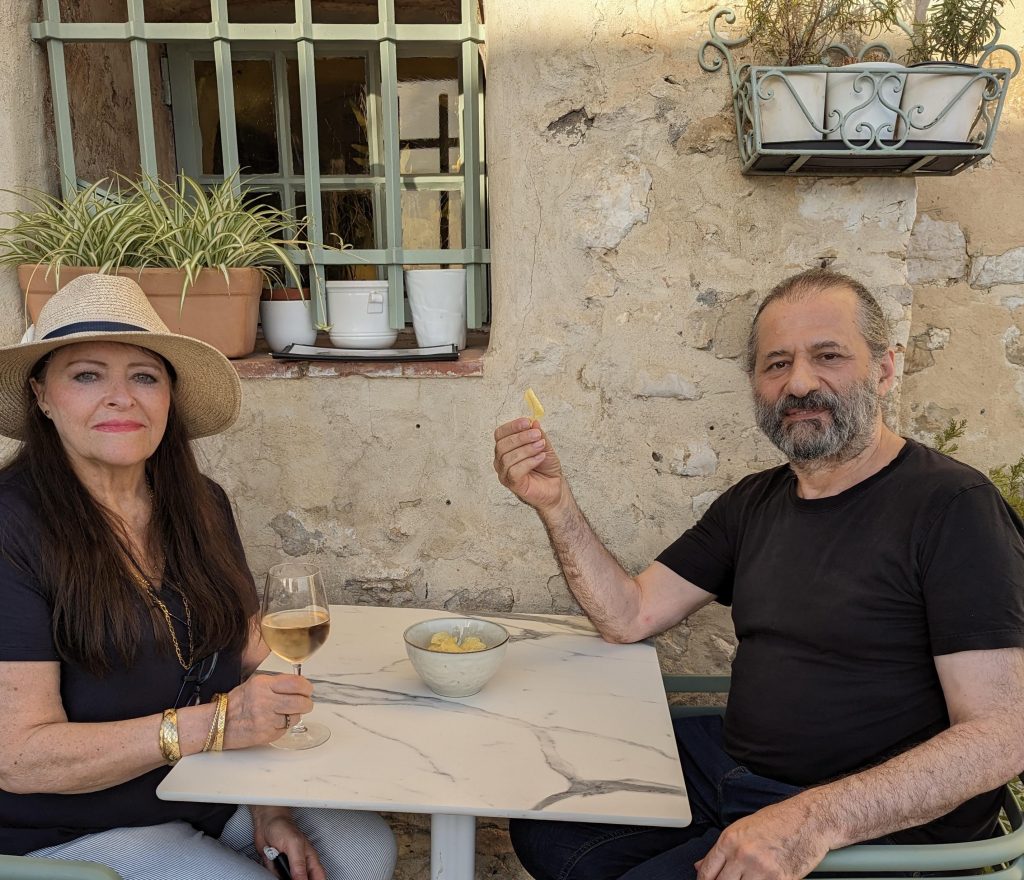
Some of the prints being displayed from The Water Lily Series in St Paul de Vence
-
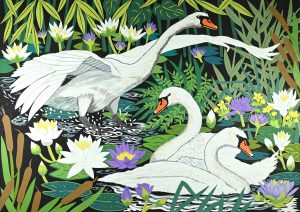 Gliding Swans art printPrice range: £85.00 through £135.00
Gliding Swans art printPrice range: £85.00 through £135.00 -
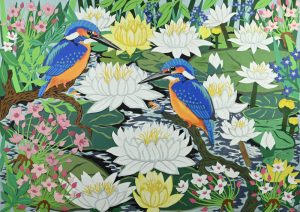 Kingfishers and Waterlilies art printPrice range: £85.00 through £235.00
Kingfishers and Waterlilies art printPrice range: £85.00 through £235.00

